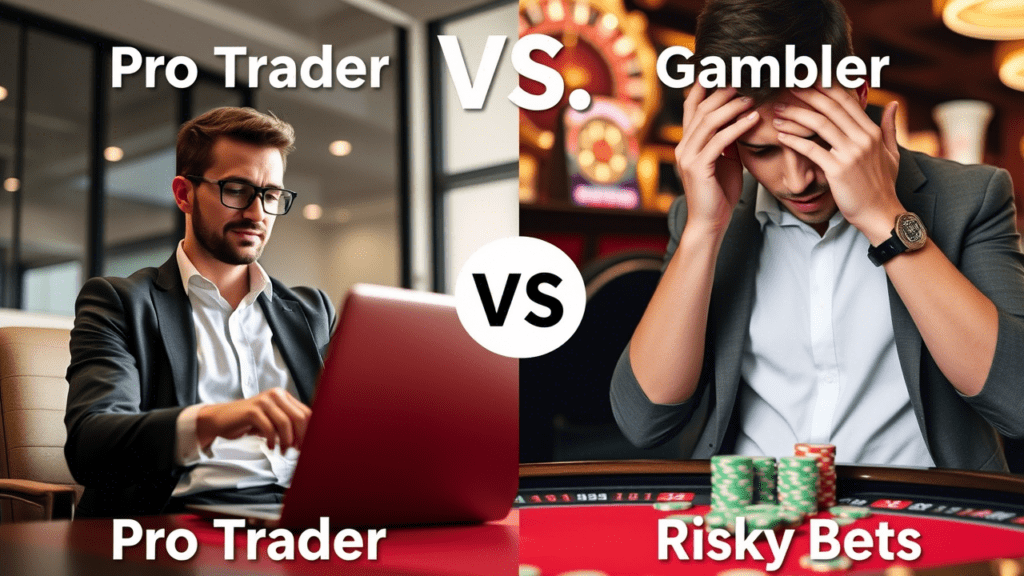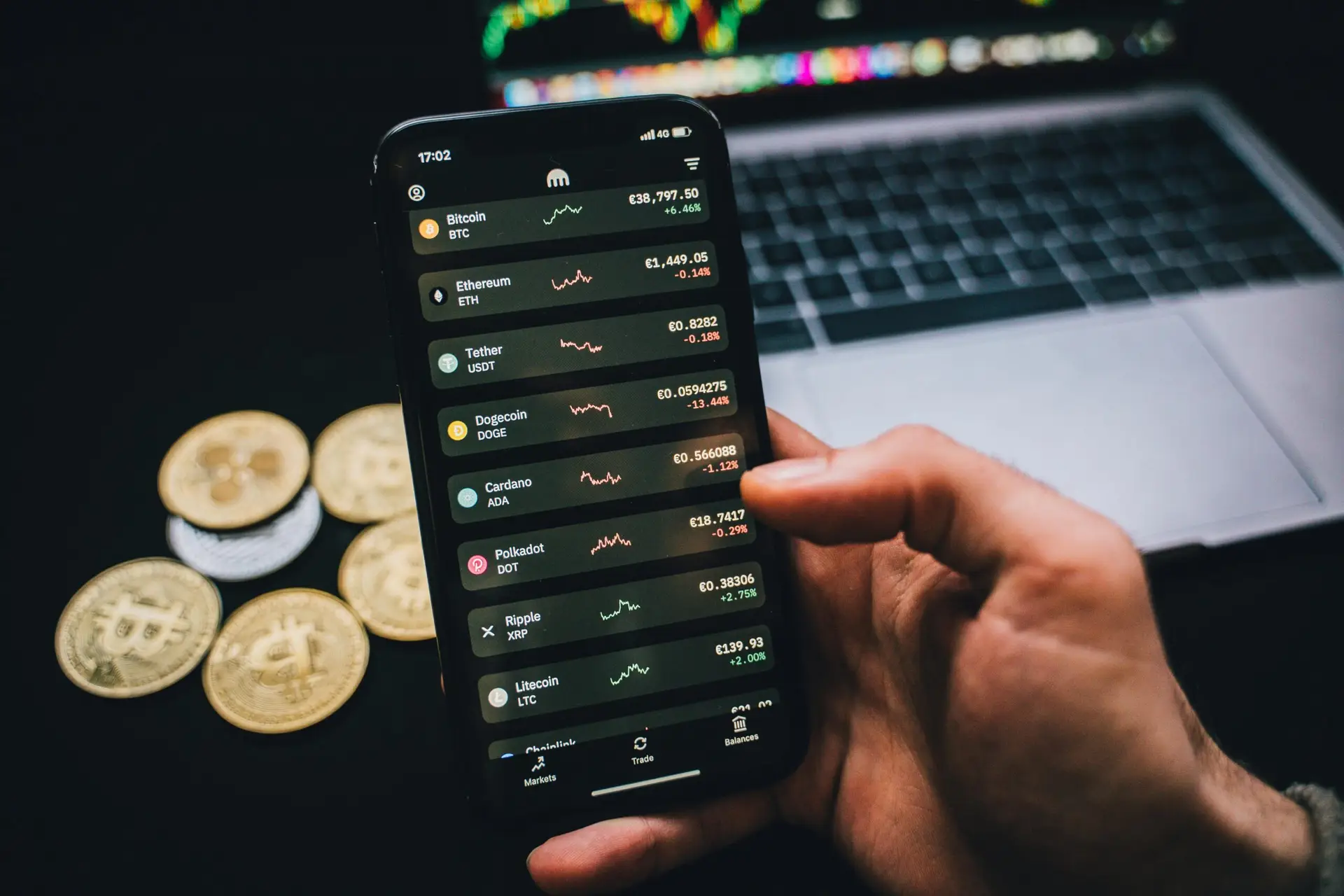Gambling and trading are often mistaken for being similar, but the reality is they are completely different. While gambling is purely based on luck, trading—when done correctly—is based on skill, analysis, and risk management. If you’ve been engaging in gambling, whether at a casino or through sports betting, it’s time to shift your mindset and start trading like a professional.
In this detailed guide, I’ll explain why gambling is a dangerous financial habit, how trading can be a smarter alternative, and most importantly, how a beginner can get started in the world of trading the right way.
Why Gambling is a Losing Game
Many people gamble because they are drawn to the thrill of making quick money. However, the harsh reality is that gambling is designed to make you lose in the long run. Here’s why:
- The House Always Wins – Casinos, sports betting platforms, and lotteries are structured to ensure the house (the organizer) makes a profit. Even if you win occasionally, the odds are always against you.
- No Strategy, Just Luck – Gamblers rely on chance rather than skill or analysis. There’s no way to improve your odds significantly over time.
- Addictive Nature – Gambling can be addictive due to the dopamine rush it provides. Many gamblers chase their losses, leading to financial ruin.
- No Wealth Building – Even if you hit a big win, gambling doesn’t provide long-term financial growth. Most gamblers end up losing more than they win.
Why Trading is the Smarter Choice
Unlike gambling, trading is a skill that can be learned, improved, and used to build long-term wealth. Here’s why trading is a much better option:
- Based on Knowledge, Not Luck – Successful trading requires research, analysis, and a strategy, making it a skill-based activity rather than a game of chance.
- Risk Can Be Managed – Unlike gambling, where you either win or lose everything, trading allows you to control risk by using stop losses, position sizing, and portfolio diversification.
- Potential for Long-Term Wealth – If done correctly, trading can provide consistent returns over time. Many traders make a full-time income or grow their investments significantly.
- You Control the Outcome – While markets are unpredictable, your success as a trader depends on your ability to make informed decisions, not random luck.
How to Start Trading as a Beginner
If you’re new to trading, don’t worry! Here’s a step-by-step guide to help you get started the right way.
Step 1: Understand the Basics of Trading
Before you jump into trading, you need to understand the different types of trading and markets available.
- Stock Trading – Buying and selling shares of publicly traded companies.
- Forex Trading – Trading currency pairs, such as USD/EUR or GBP/JPY.
- Crypto Trading – Buying and selling cryptocurrencies like Bitcoin and Ethereum.
- Commodities Trading – Trading assets like gold, oil, and silver.
Each market has its own characteristics, so choose one that interests you and fits your goals.
Step 2: Learn How Trading Works
To trade successfully, you need to understand key concepts:
✔ Technical Analysis – Analyzing price charts, patterns, and indicators to predict market movements.
✔ Fundamental Analysis – Studying economic news, company financials, and other external factors that influence prices.
✔ Risk Management – Setting stop losses, managing trade sizes, and diversifying investments to protect your capital.
There are many online courses, YouTube tutorials, and books that can help you learn these skills.
Step 3: Choose a Reliable Trading Platform
To start trading, you need a broker or exchange that allows you to place trades. Here are some popular platforms:
🔹 For Stock Trading: E*TRADE, TD Ameritrade, Robinhood
🔹 For Forex Trading: MetaTrader 4 (MT4), MetaTrader 5 (MT5), OANDA
🔹 For Crypto Trading: Binance, Coinbase, Kraken
Make sure to choose a platform with low fees, good customer support, and educational resources for beginners.
Step 4: Practice with a Demo Account
Before you risk real money, practice trading with a demo account. Most brokers offer virtual trading accounts where you can test strategies without financial risk.
This helps you:
✅ Get familiar with the trading platform
✅ Test different trading strategies
✅ Learn how to manage risk without losing real money
Step 5: Develop a Trading Strategy
A professional trader never trades randomly. You need a strategy that defines:
- Entry Points: When to buy an asset
- Exit Points: When to sell and take profit
- Stop Losses: When to cut your losses if the trade goes against you
Some common beginner-friendly strategies include:
📌 Trend Following – Buying when the price is rising and selling when it starts falling.
📌 Breakout Trading – Entering a trade when the price moves beyond a key resistance or support level.
📌 Swing Trading – Holding trades for a few days to capitalize on medium-term price movements.
Step 6: Start Small and Manage Risk
When you’re ready to trade with real money, start small. Never risk more than 1-2% of your account balance on a single trade.
💡 Golden Rule of Trading: Always use stop-loss orders to limit potential losses and protect your capital.
Step 7: Keep Learning and Improving
Trading is a lifelong skill. To get better, continuously educate yourself by:
📚 Reading books on trading psychology and strategies
📈 Following experienced traders on social media
🎓 Taking online courses and watching YouTube tutorials
Final Thoughts: Make the Shift from Gambling to Trading
Gambling and trading may both involve risk, but the difference is clear:
❌ Gambling is based on luck, often leading to financial losses and addiction.
✅ Trading is based on knowledge, skill, and strategy, offering long-term financial growth.
If you want to build real wealth and take control of your financial future, start learning how to trade like a professional. It’s time to stop relying on luck and start mastering a skill that can change your life.
👉 Are you ready to make the switch from gambling to trading? Drop a comment below and let’s discuss! 🚀





